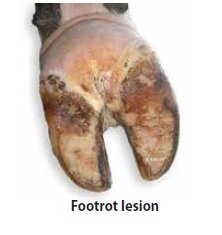Clostridial Deaths
/Having recently dealt with a case of ‘sudden death’ in R1 dairy heifers (7-8 months old) due to clostridial disease, it came as a timely reminder of the importance and effectiveness of a vaccination programme against this group of diseases.
16 heifers out of 360 were lost sporadically over a period of 5-6 weeks whilst grazing a high clover content sward.
Post-mortems were performed - a diagnosis of clostridial deaths was made.
Although they had been vaccinated with a 10 in 1 as calves (Covexin-10) it is believed that they had not received their booster vaccination.
They have since had a sensitiser followed up by a booster vaccination 4 weeks later.
One week on since booster and we have had no further deaths.
Clostridial diseases are a group of infections that cause sudden death. Death is very rapid and usually occurs before the animals are even noticed. There are dozens of Clostridial species whose spores survive in the soil indefinitely. Control therefore relies on vaccination.
Calves usually receive their first vaccination at the time of disbudding. This should be followed up with a booster vaccination four weeks later. Full protection is not achieved until 10 days after the booster vaccination. It is now also advised that stock grazing crops – particularly Fodder Beet – get a booster against clostridial diseases two weeks before going onto the crop, regardless of their previous vaccination history.
The risk of clostridial deaths is higher for stock grazing crop due to a combination of factors but largely due the high ‘sugar’ level in the crop and high soil intake. When grazing fodder beet, once fully transitioned the main risk of disease comes from clostridial infections.
Covexin 10 in 1 vaccine is considered the ‘Rolls Royce’ of clostridial protection covering 10 different strains of the disease. Cost = $1.44 excl. per 2ml dose.
Vaccination is extremely effective at preventing and minimising losses associated with this group of diseases. It is also cost effective and losses of even small numbers of stock will cover the cost of vaccination. Because the bacteria form spores that are resistant in the environment, every animal is likely to experience a challenge in their lifetime.




